Plagiarism is the most common issue that every academic writer faces while writing their research paper or dissertation. The famous plagiarism-checking tool Turnitin is classifying plagiarism into 10 common types before generating the report. In this article, we are going to find out the 10 types of plagiarism that every academic writer should know to avoid.
Learn to Research
What is Plagiarism?
Plagiarism is the unauthorized use or close imitation of the language and thoughts of another author and the representation of them as one’s own original work.
Updated: 10 Example Plagiarism Types
Plagiarism=Replacement (copying & pasting someone else’s work into your own)
1. “Clone” – Plagiarism
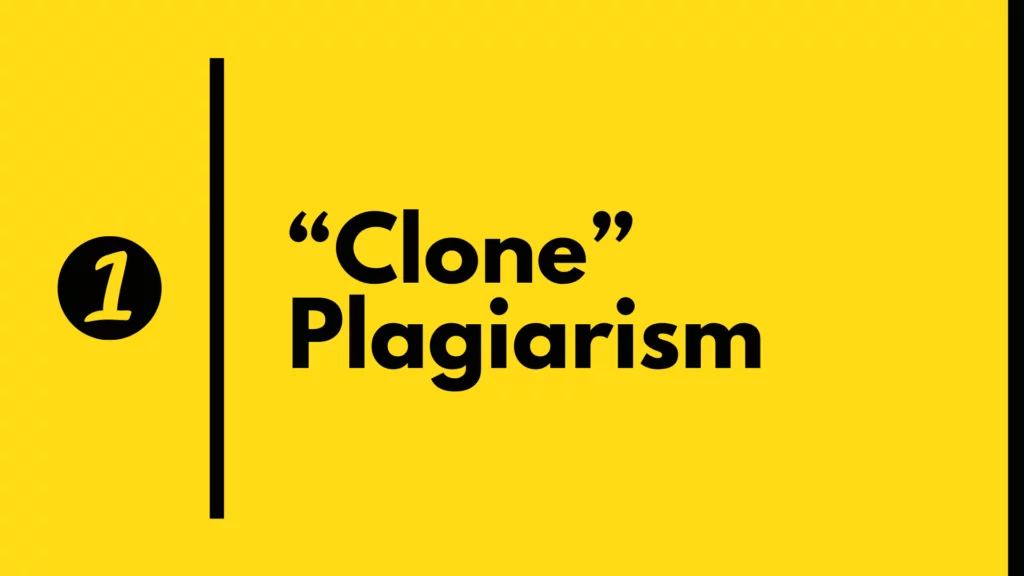
Cloning plagiarism is also called identical copying. In this, one person copies another work (word-for-word) without any change and claims it as his own work.
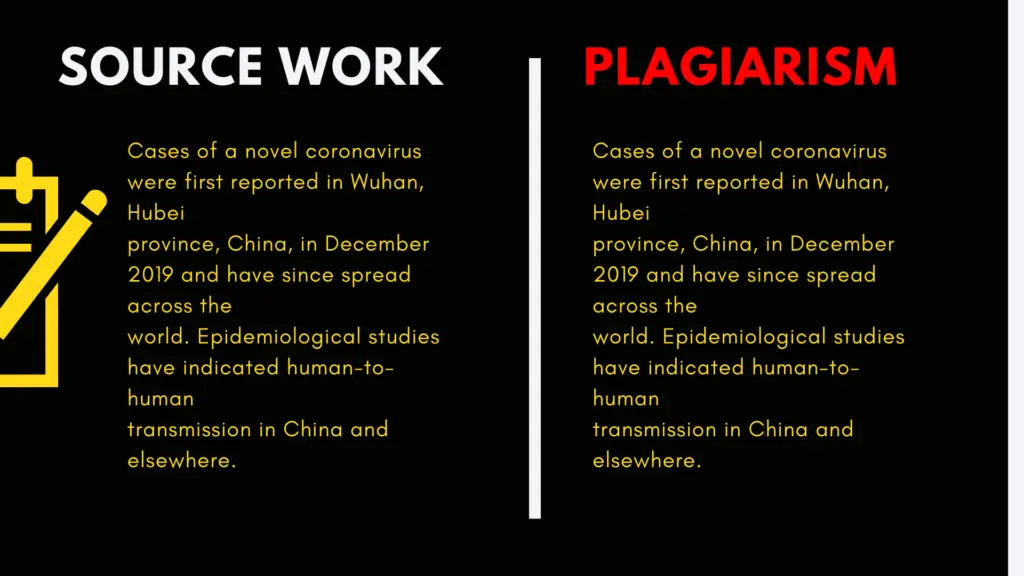
2. “Remix” – Plagiarism
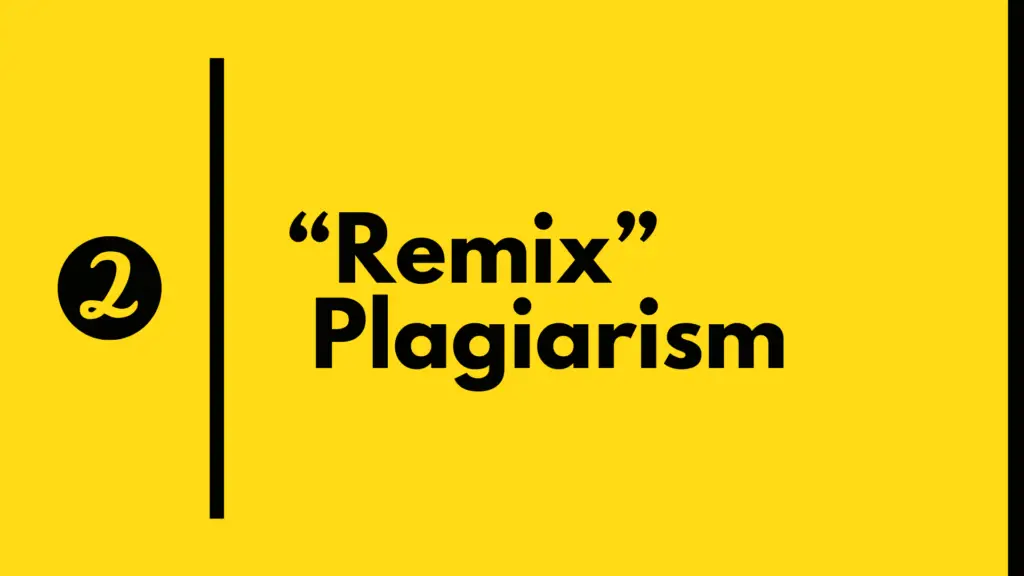
In the remix type of plagiarism, one person collects information from various sources and mix all together as a single document then claim the work as their own work.
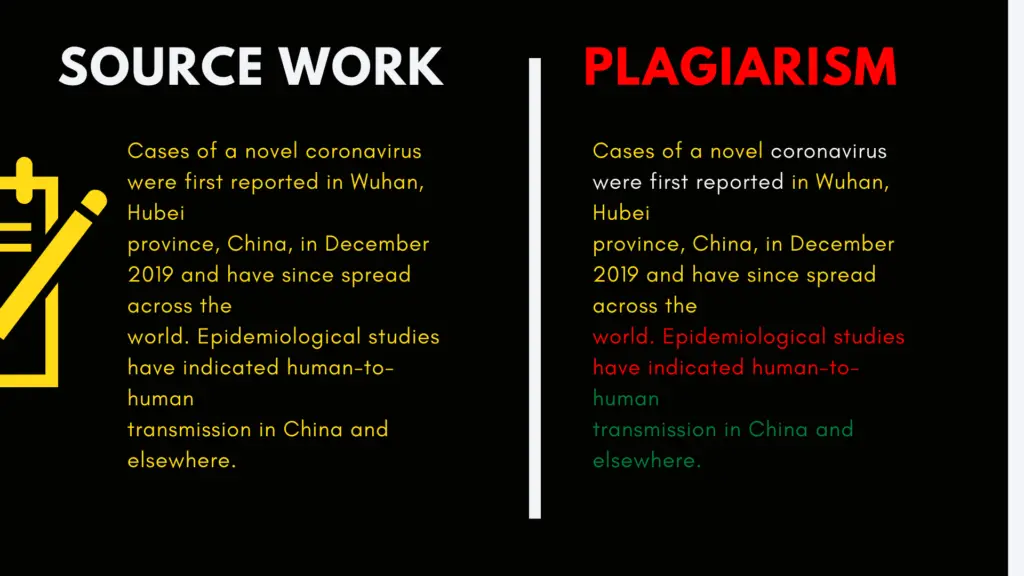
3. “Ctrl+C” – Plagiarism
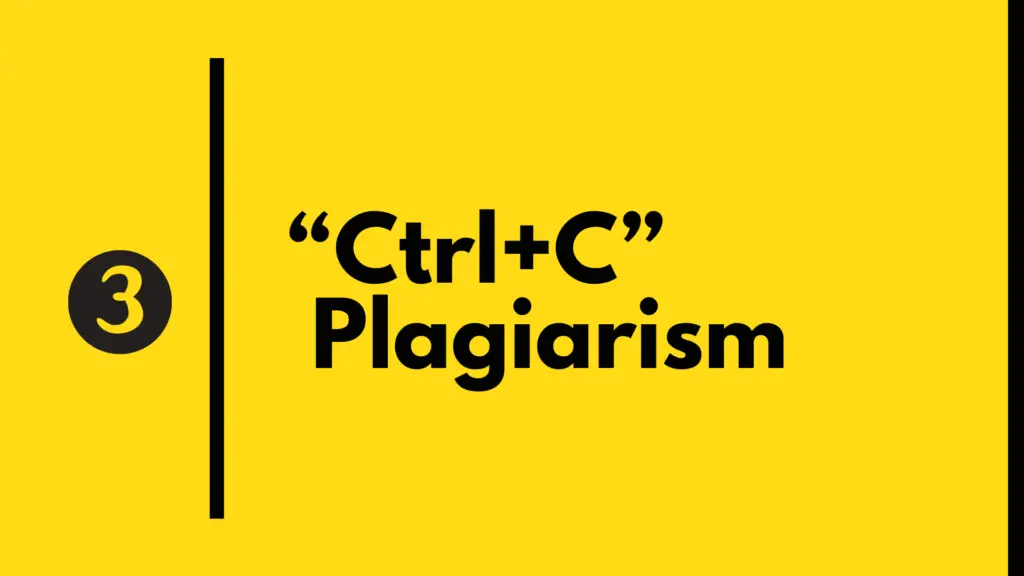
In the written document a significant portion of text is copied from any single source without any alteration then which is called Ctrl+C kind of plagiarism.
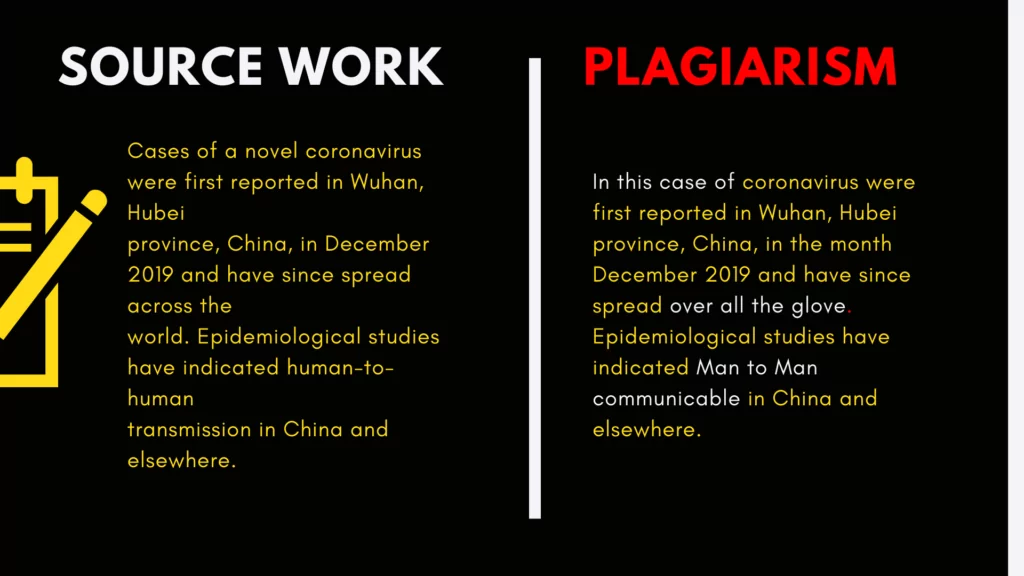
4. “Hybrid” – Plagiarism
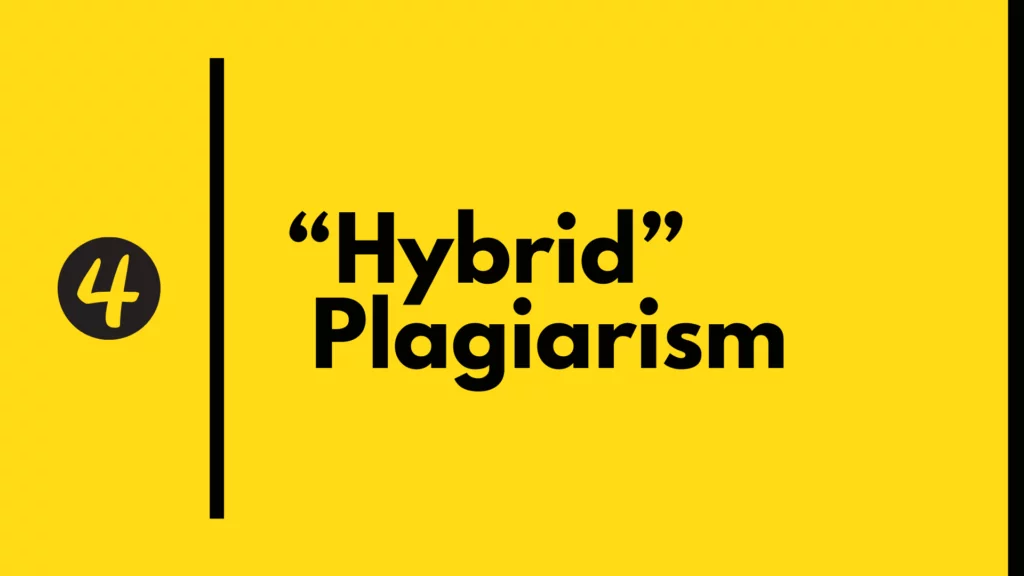
In the hybrid type of plagiarism, Perfectly cited source documents are copied and arranged as a new document without citation.
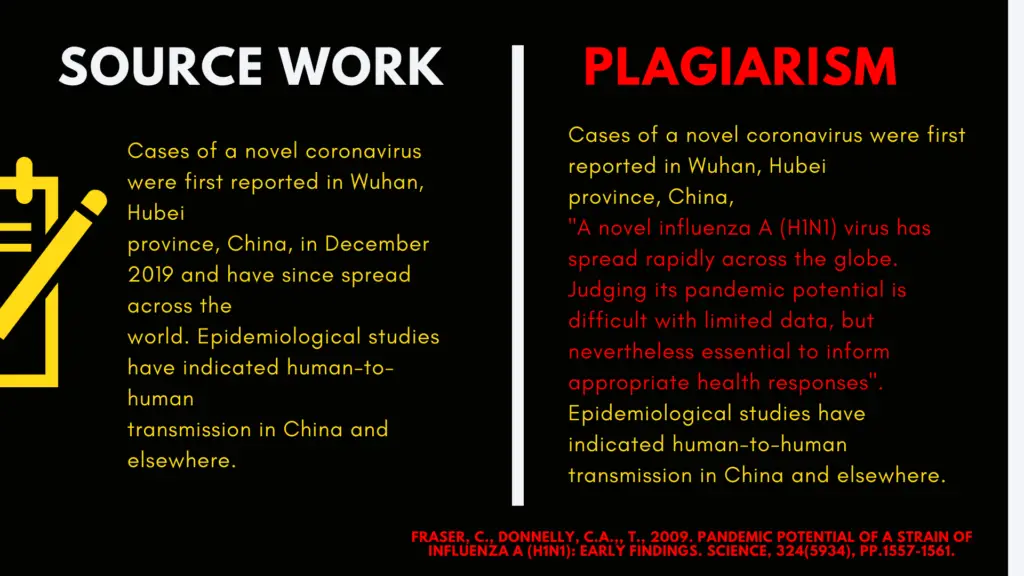
5. “Find-Replace” – Plagiarism
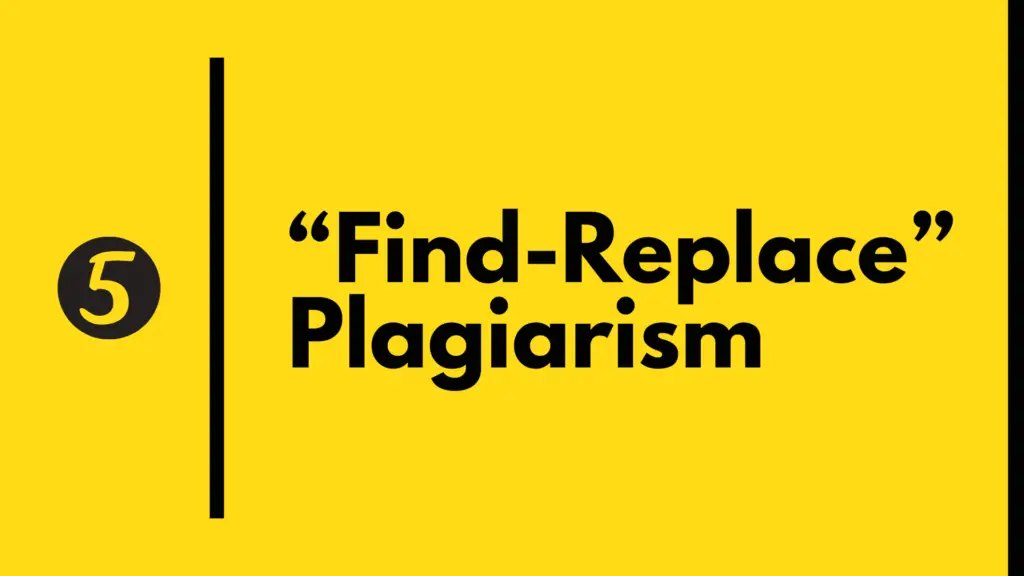
Changing the most common keywords and phrases in the copied content and not making any changes in the essential document is called “Find and Replace” – a kind of plagiarism.
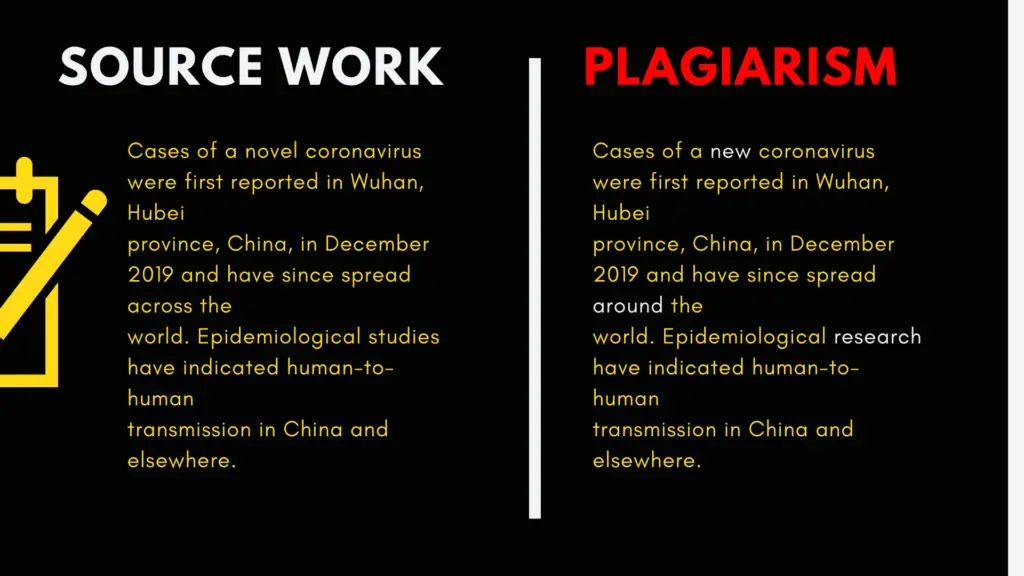
6. “Recycle” – Plagiarism
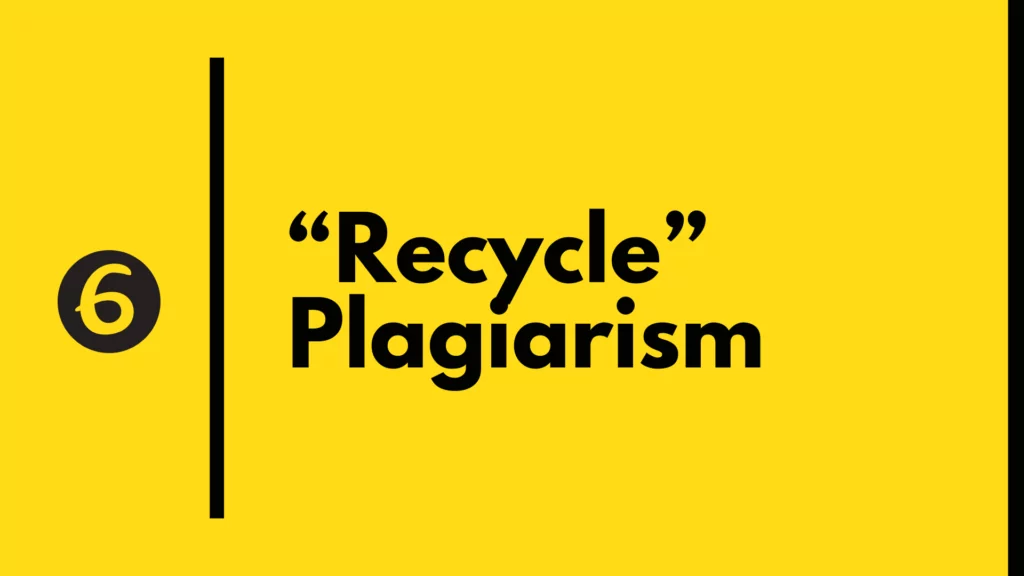
Recycling is also called self-plagiarism. It refers to the act of borrowing from one’s own previous document without a proper citation.
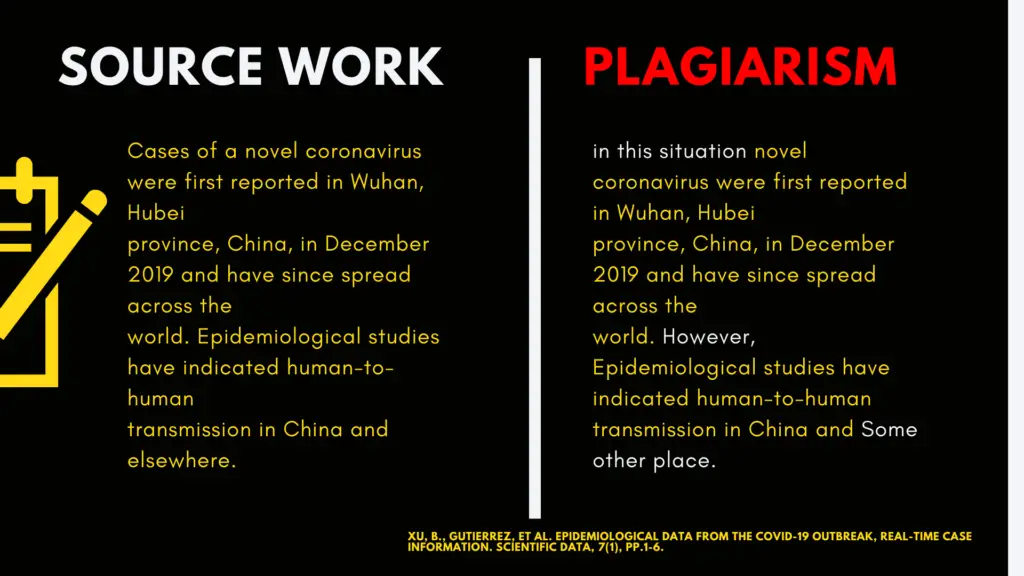
7. “Mashup” – Plagiarism
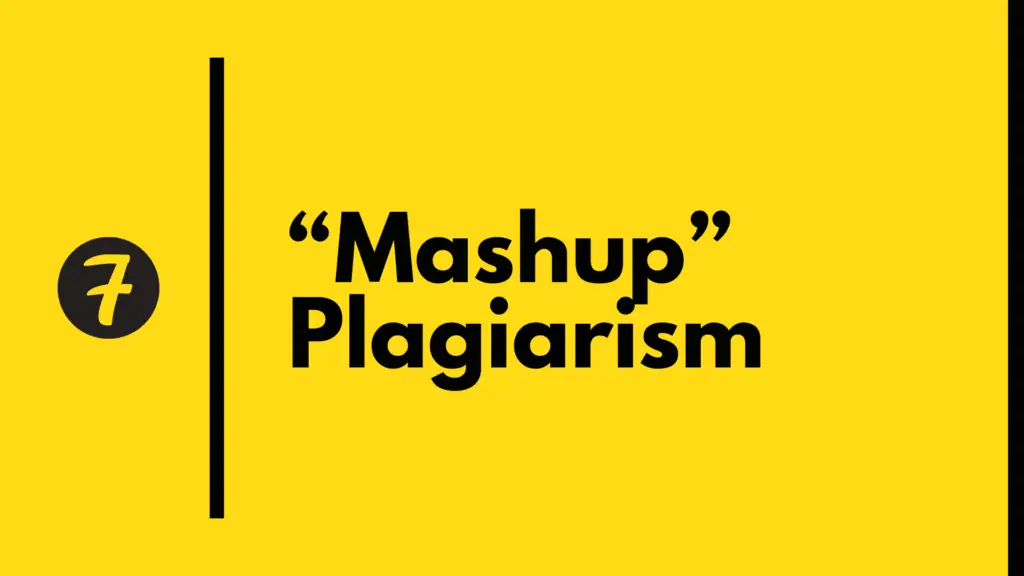
When the written document is copied from more than one source and all are mixed together without any proper citation then it is called a mashup kind of plagiarism
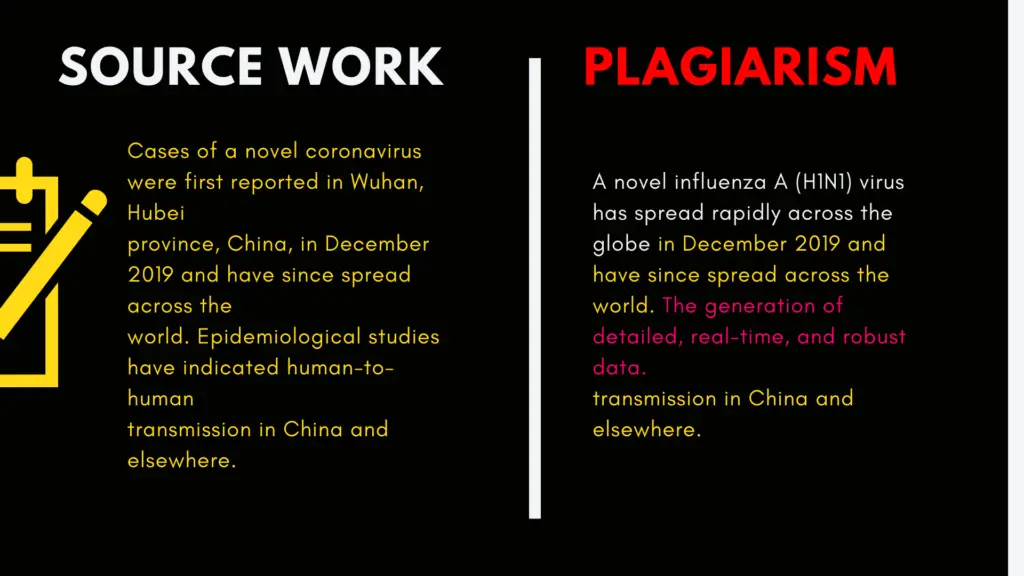
8. “404 Error” – Plagiarism
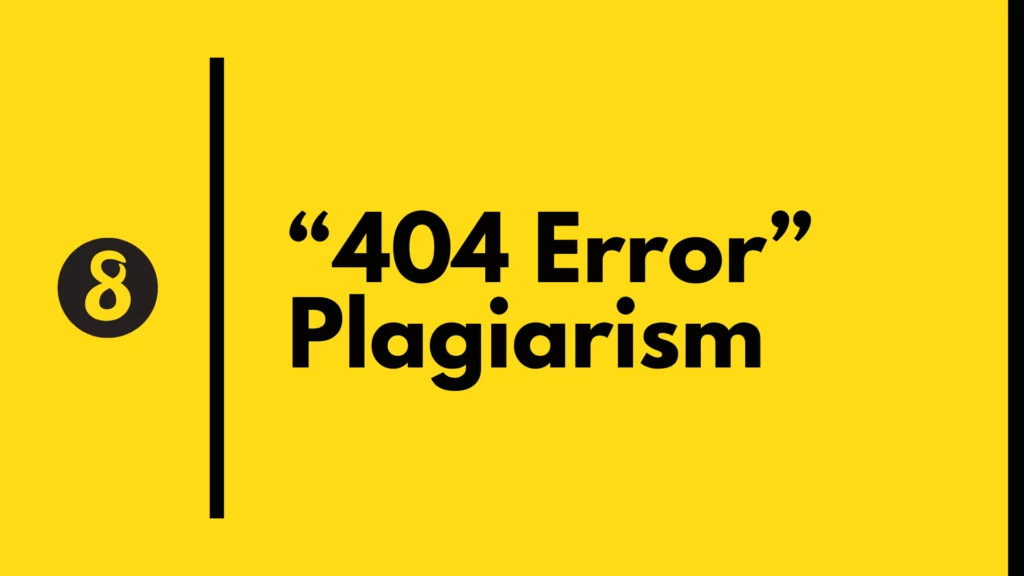
“404 Error” – plagiarism is the eighth most important type. In this, a person creates a document by copying from various sources and prepare as a single document with citations. but if the citation is inaccurate or it will lead to non-existing resources then it will be called 404 types of plagiarism.
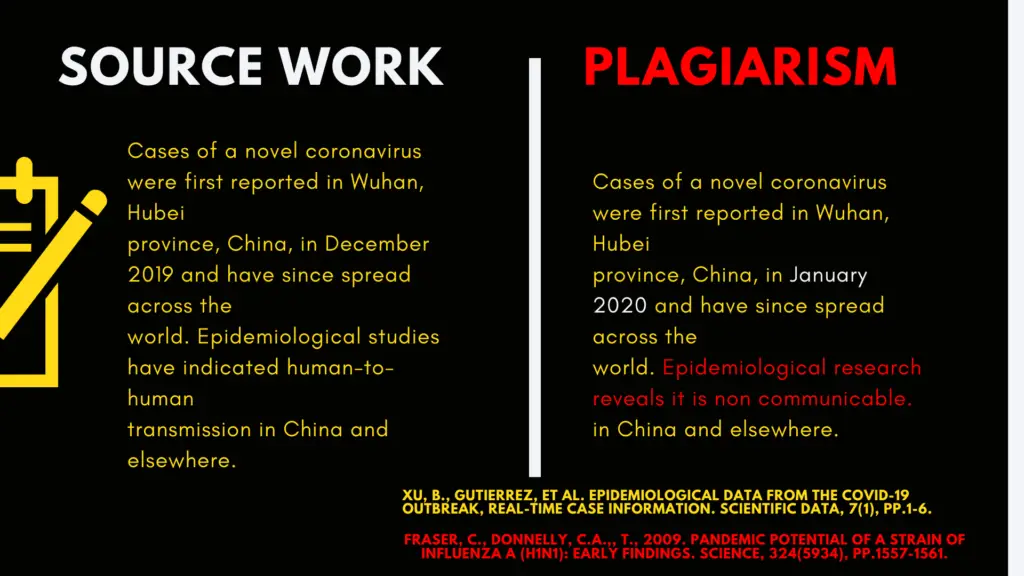
9. “Aggregator” – Plagiarism
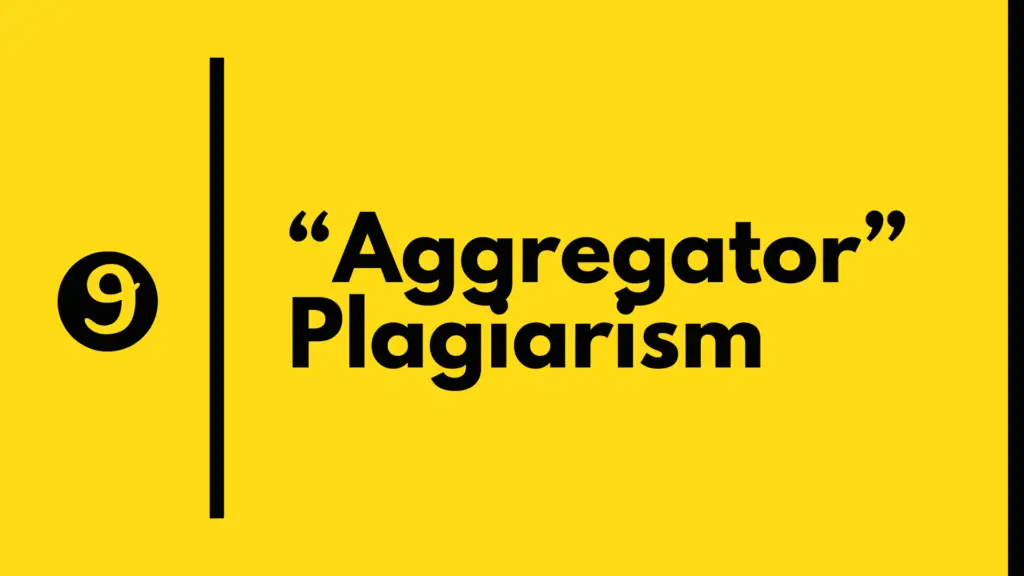
In this type of plagiarism, the written document includes all the proper citations but it does not contain original work then it is called aggregator plagiarism.
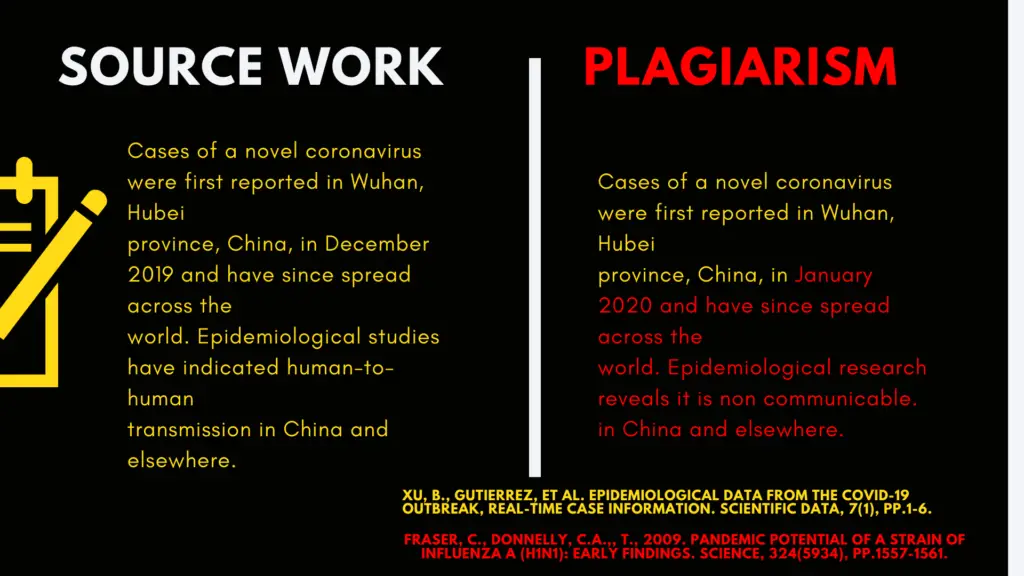
10. “Re-Tweet” – Plagiarism
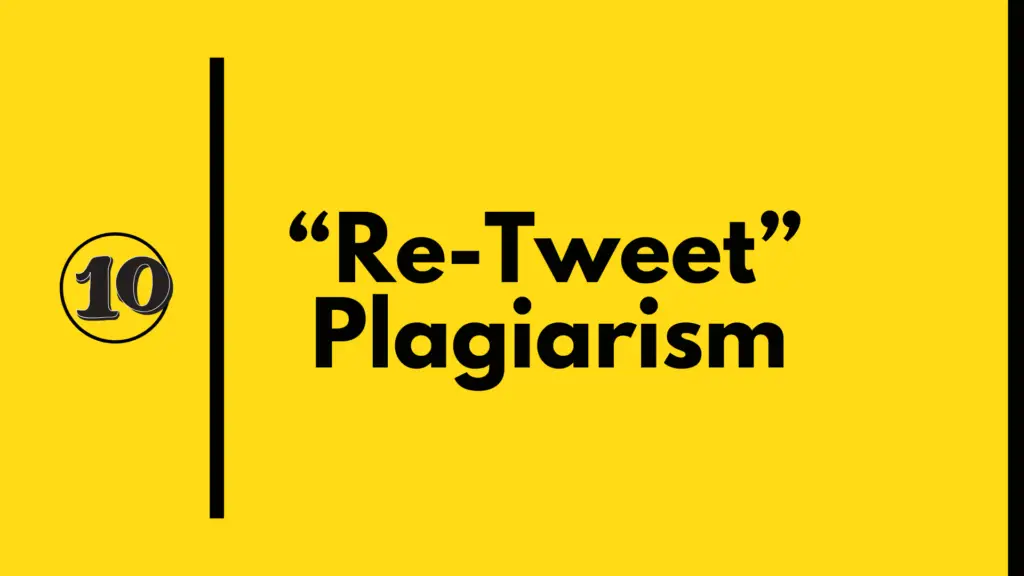
If all the written document seems perfect with properly cited marks but still the document resembles somewhere the original text’s structure or wordings then it is called Re-Tweet plagiarism.
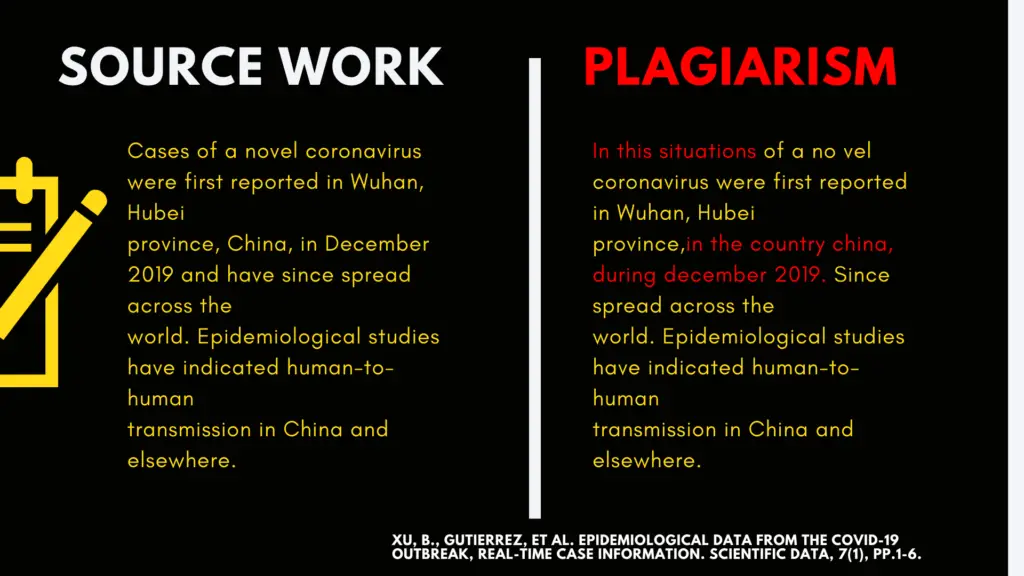
Tips to Avoid Plagiarism
- Read and understand the original document several times before start explaining about it.
- Do not copy any word or
sentence from the original document.
- Give proper citations to all the sources(Books, journals, Websites, videos, and so on).
- In case of citing online sources, Include the accessed date and appropriate URL in the reference.
- Common phrases and definitions need to be quoted and cited without any modification.
- Make a practice to include the “references” section whenever writing an academic document.
- Cross-verify all your citations before submitting your document.
- Finally, take a plagiarism report from any one of the famous plagiarism software to ensure the originality of the written document.
I hope, this will help academic writers to know about the 10 common types of plagiarism and their severity.
Video: 10 Types of Plagiarism
Watch this video for more detailed information
5 Tips To Avoid Plagiarism

Follow ilovephd on Pinterest
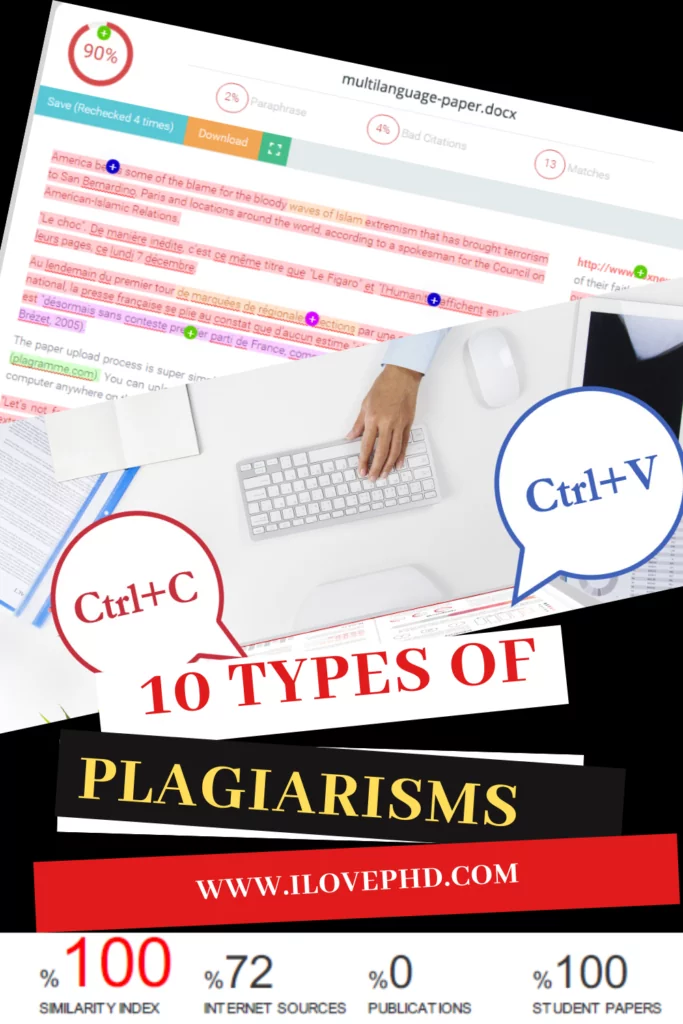
Courtesy: Turnitin.com
10 Ideas to avoid Plagiarism?
1. Cite your sources.
2. Use direct quotes sparingly.
3. Paraphrase instead of quoting.
4. Use your own words.
5. Don't copy and paste from the internet.
6. Don't plagiarize from your own previous work.
7. Keep track of the sources you consult.
8. Take good notes.
9. Give credit where it's due.
10. Check your work for plagiarism.
Why Plagiarism is a Bad Idea?
There are many reasons why plagiarism is a bad idea. Here are some of the most important ones:
1. It is dishonest.
2. It is a form of cheating.
3. It can lead to academic penalties, including expulsion from school.
4. It can damage your reputation.
5. It can lead to legal penalties, including fines and jail time.
Also Read:10 Best Free Plagiarism Checker Online
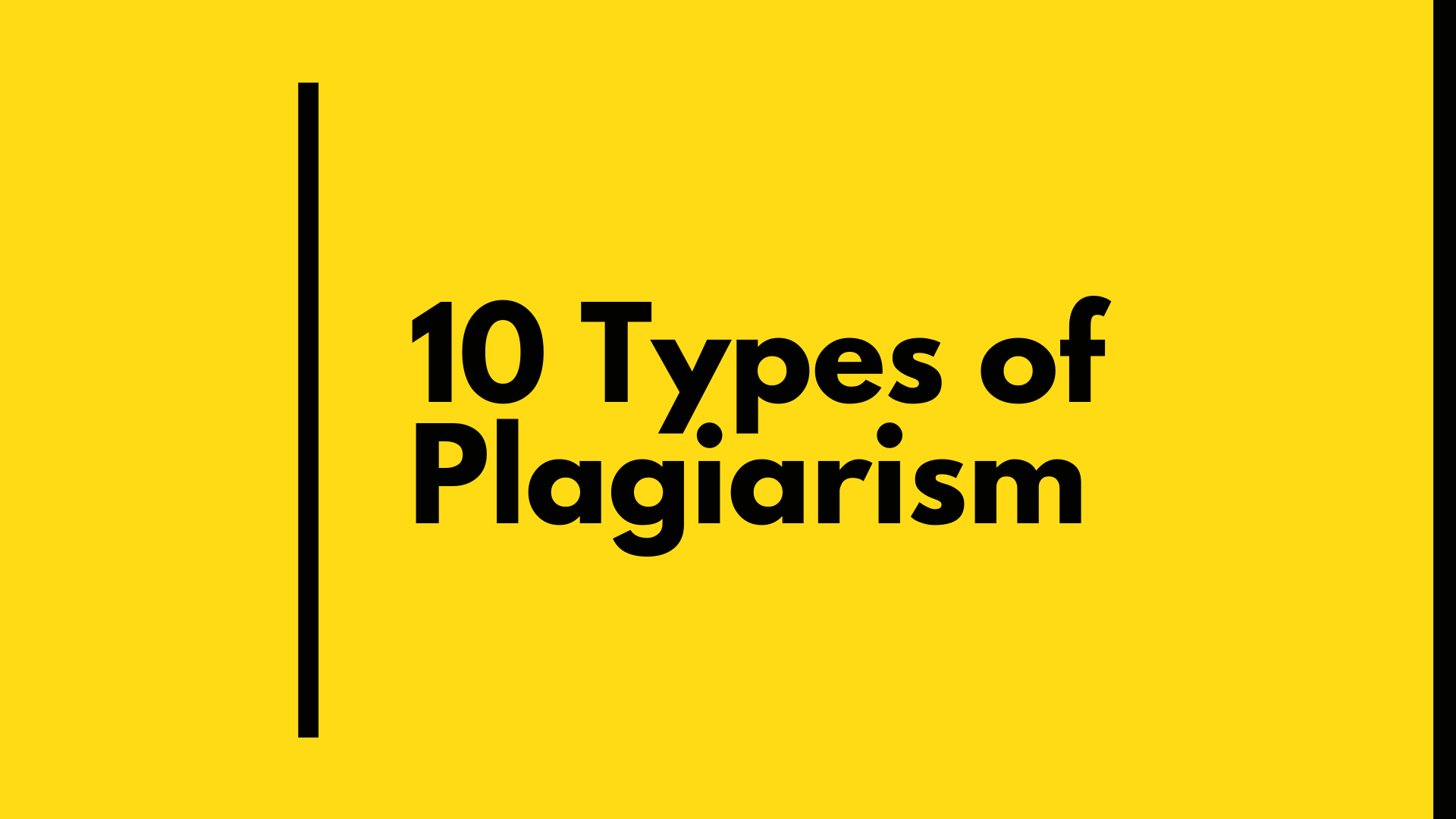


[…] Ethics: Fake journals do not consider research ethics. […]
[…] tools are very important before submitting your thesis. In this article, ilovephd provides the 10 free plagiarism checker tools available online for your thesis […]
very very useful for upcoming researchers and students.
[…] their research paper or dissertation. The famous plagiarism checking tool Turnitin classifying the plagiarisms into 10 common types before generating the report. But avoiding plagiarism and effective paraphrasing of own ideas will […]
[…] Plagiarism in all its forms constitutes unethical publishing behaviour and is unacceptable. […]
[…] Plagiarism: […]
[…] Ilovephd – 10 types […]
[…] of same work again and again with little modification, rephrasing, remixing, hybrid mixing, mashup, 404-Error, Find-Replace and copying without citation are also included in the category of the plagiarism. The […]
[…] plagiarised work form academics do not acquire any credibility or value in the evaluation of academic promotions, […]
[…] Plagiarism […]